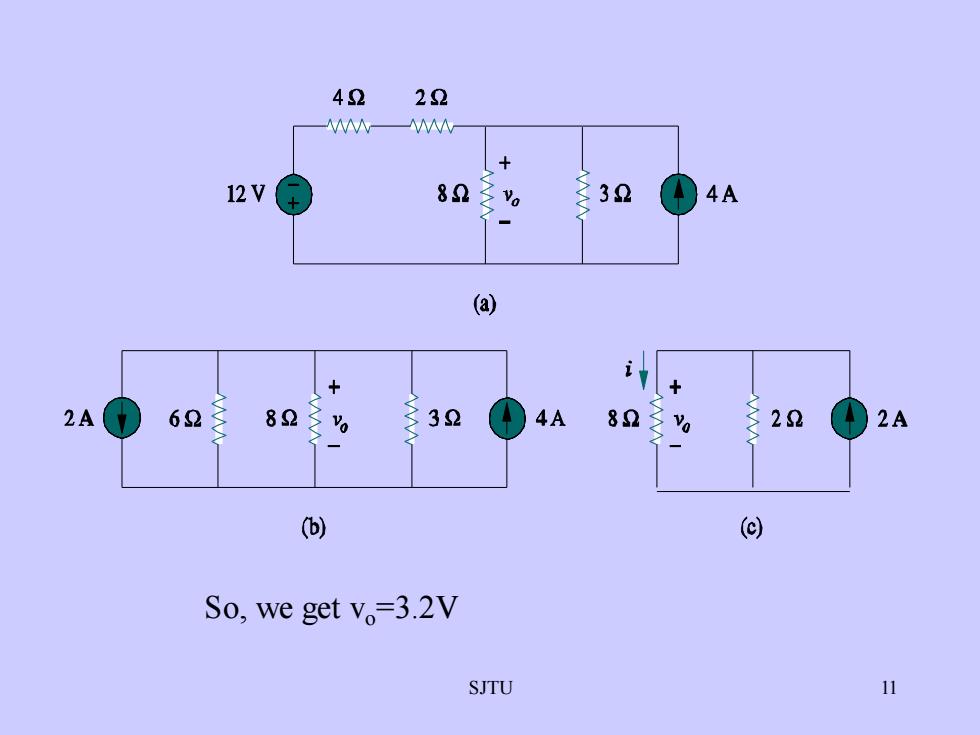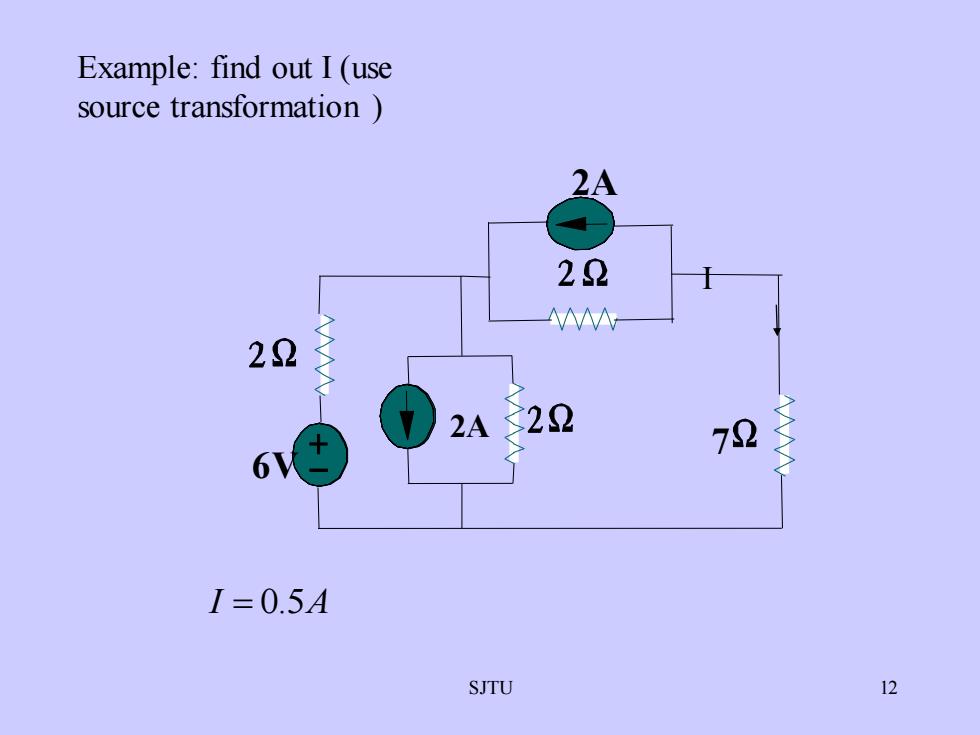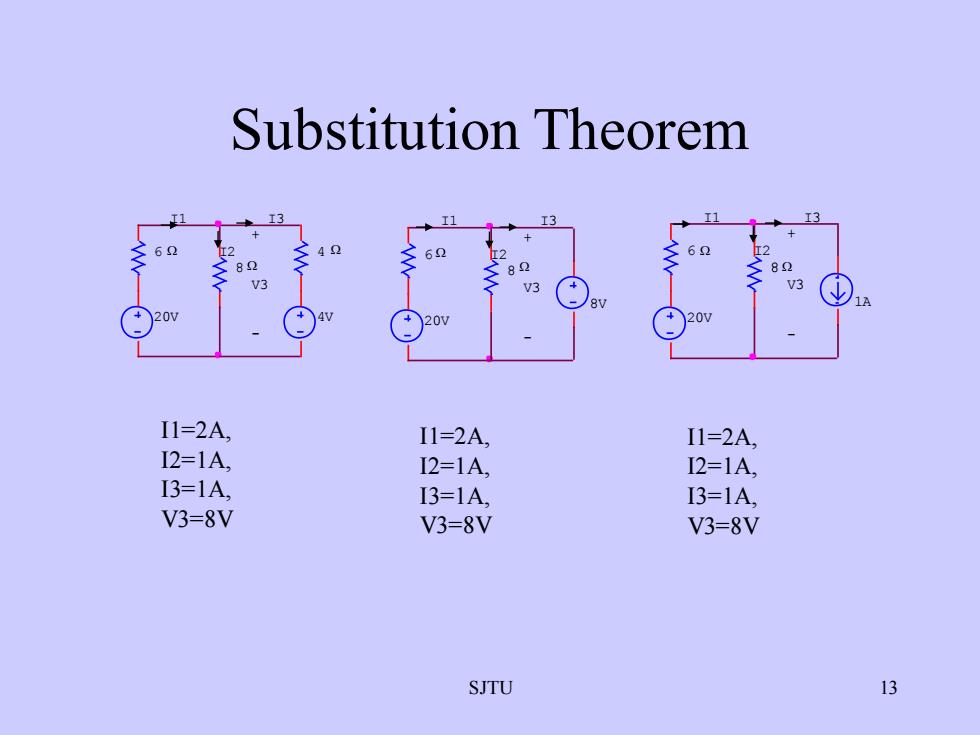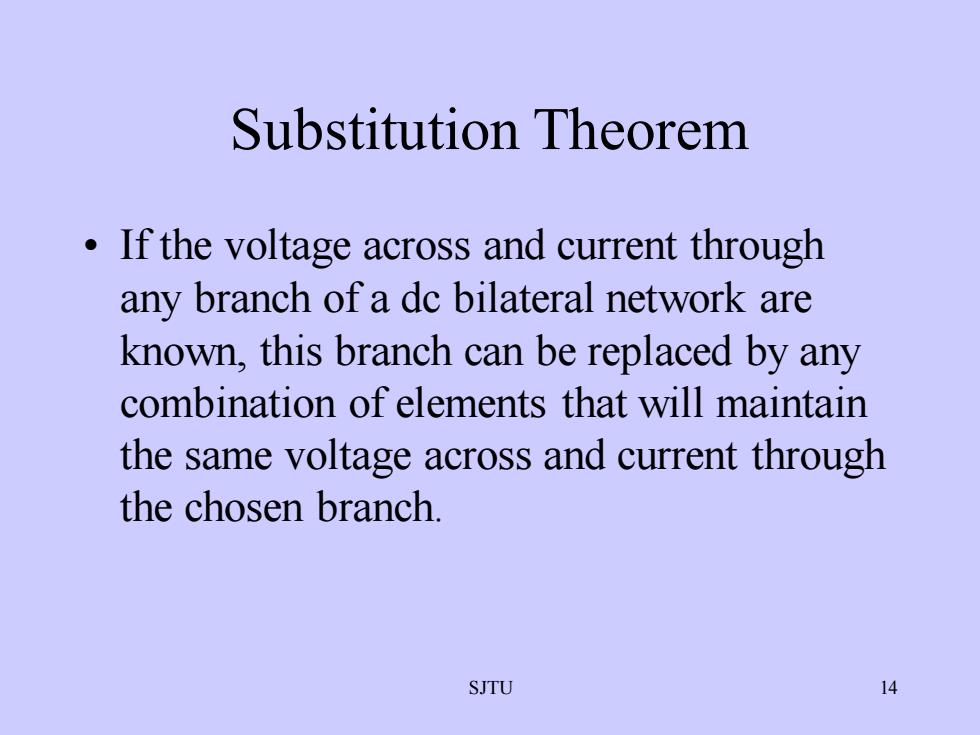
4222十WA3212 V824AV(a)十1622A82324A82222A2VVo(b)(c)So, we get V.=3.2V11SJTU
SJTU 11 So, we get vo=3.2V

Example: find out I (usesource transformation22221222A726VI=0.5A12SJTU
SJTU 12 7 2A 6V 2A I Example: find out I (use source transformation ) I = 0.5A

Substitution Theorem0L73V38VI1=2A,I1=2A,I1=2A,12=1A,I2=1A,I2=1A,I3=1A,13=1A,13=1A,V3-8VV3=8VV3-8V13SJTU
SJTU 13 Substitution Theorem 20V + 6 I2 4V 4 - 8 I3 V3 I1 20V 8V - I3 V3 6 I1 + 8 I2 V3 6 + - 20V I1 1A 8 I3 I2 I1=2A, I2=1A, I3=1A, V3=8V I1=2A, I2=1A, I3=1A, V3=8V I1=2A, I2=1A, I3=1A, V3=8V

Substitution Theorem: If the voltage across and current throughany branch of a dc bilateral network areknown, this branch can be replaced by anycombination of elements that will maintainthe same voltage across and current throughthe chosen branch14SJTU
SJTU 14 Substitution Theorem • If the voltage across and current through any branch of a dc bilateral network are known, this branch can be replaced by any combination of elements that will maintain the same voltage across and current through the chosen branch